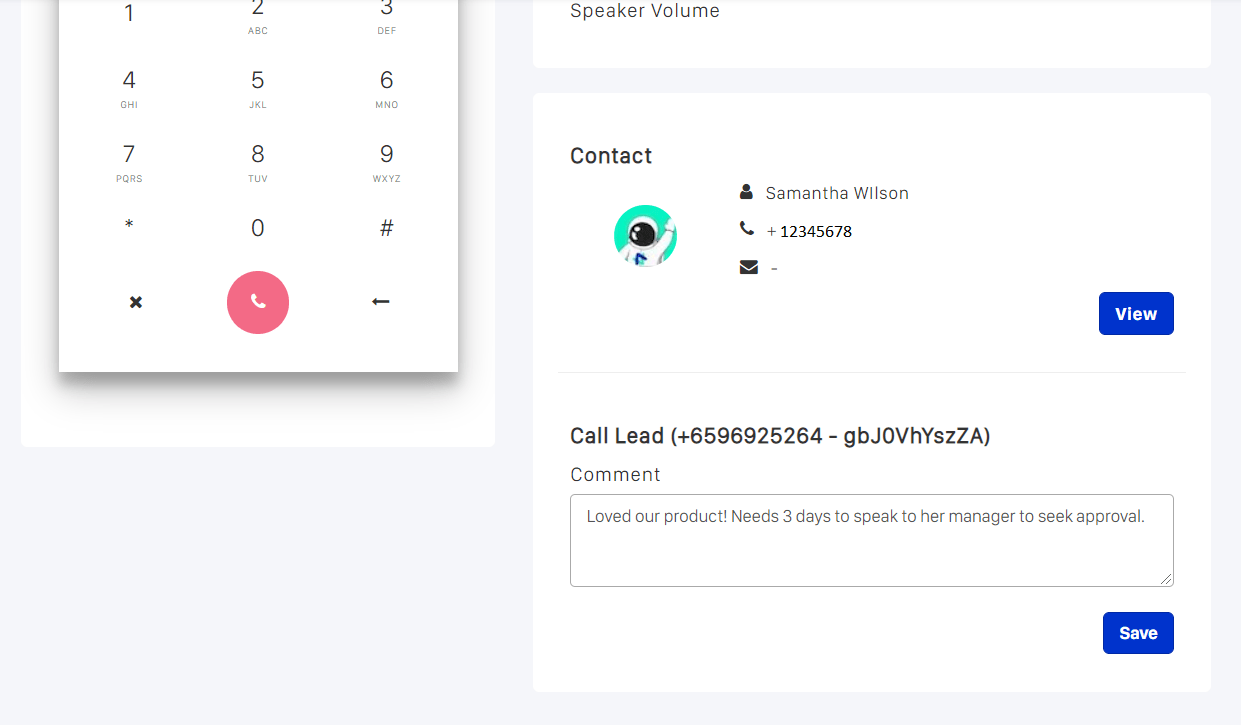

Start driving better conversations.
Novocall will be your new favorite business phone system.

Digital Marketing Executive

Outbound calls are dead! Or so says the haters.
In recent years, inbound strategies have been put under the spotlight and have been deemed to be the superior lead generation method.
But as with anything in the business world (and life in general, really), it depends on the context. Your business goals, company size, and the industry you are in, all play a role in determining which lead generation strategies work best for you.
In fact, the statistics speak for themselves. Outbound calls work, and an outbound call center can be a huge asset to your business.
Let’s explore what outbound call centers are and why you should use them.
Outbound calls are those made by call reps to a lead, customer, or other stakeholders of a business. In general, they are used by the sales team to close the sale, or simply following up with a lead. But is there more to it? 👀 Here are some FAQs 👇
Most of the time, it’s members of the sales team of a company. At times companies would outsource outbound calling to outbound call centers (more on that later 😏). Your customer success teams should also be making outbound calls to proactive check on your customer and gather feedback on your product or service.
There’s actually quite a long list. But we’ve narrowed it down to just the most common ones just for you:
Well, yes and no.
The term “outbound call” is actually an umbrella term that can be broken down into three main types. And cold calling just happens to be one of them.
But just a quick teaser, the cold call is ‘cold’ because your prospect has never heard of your company, product, or service. There is a lack of a ‘warm’ relationship as no prior contact has been established.
Businesses in various industries still use outbound calls as part of their lead generation strategies. Some of these businesses include:
And this list is not exhaustive!
Both business-to-customer (B2C) and business-to-business (B2B) companies use outbound calls in their sales strategy. In particular, it is more commonly used among companies that sell high ticket products and services, as well as those that provide high-touch services.
Prospects will need more convincing, a walkthrough of the product or service, and perhaps even a live demonstration.
That’s because selling high-value items require proper and deep conversations with prospects to uncover the real value of your product offering. If you’re able to provide a solution, they’ll most likely purchase from you.
An outbound call center is one where call agents make outbound calls with the aim of conducting sales, or other business-related activities like market research.
Call agents typically use outbound calling dialers to facilitate this process. This is due to the sheer number of calls to be made.
Outbound dialing software are at the very core of call center operations. They dial phone numbers from a list of contacts, or from contacts found within a business’ CRM system.
Dialers aren’t only used by call centers, but it can be used by businesses that have their own call center teams.
Let’s take a closer look at how the different types of dialers work.
As its name suggests, is a basic dialer where reps have to manually key in phone numbers one after the other.

It is commonly used by smaller companies and call centers that have fewer contacts to call.
These dialers allow agents to view information about the next contact on their potential leads list.
Based on the information, the sales rep can then decide whether or not to call them. This is very useful because agents have time to read up on the prospects before making the call.

With preview dialers, sales reps don’t enter a call entirely cluelessly and can better engage your prospect
In addition, having more prior knowledge before they make calls and gives sales reps time to adjust their sales techniques where necessary.
Also known as an autodialer, a power dialer is an automated outbound dialer.
Once the reps’ previous call has ended, the dialer will automatically dial the next number in the queue. Power dialers can also make multiple calls at any one time.
Sometimes, your calls can’t get through. Your prospect’s line may be busy, or the number you dialed was simply disconnected.
When you can’t get through to the numbers you dialed, power dialers move on and dials the next number in line.
Invalid numbers won’t be delivered to reps. This, in turn, maximizes their time on the phone.
Predictive dialers also make automatic outgoing calls and screens out unanswered calls.

What’s different is that predictive dialers have the ability to utilize call metrics to predict the moment when your reps will be available to make the next call.
In other words, if the call center has an influx of calls and many reps are busy, the predictive dialer will slow down or stop its outreach until it detects that reps are nearing the end of their calls.
Larger call centers or companies usually use predictive dialers to help scale the number of live connections.
That being said, how can you be sure that you’re enjoying the benefits of outbound calls if you’re not measuring your success?
To help you with that, we compiled a list of some of the most valuable outbound calling metrics to pay attention to.
Average call duration refers to the time reps spend on the call. Long call durations could possibly indicate that the lead is genuinely interested in the product (why else would they spend so much time talking to you?).
Call volume per agent tracks the efficiency of each rep. This helps businesses keep track of reps who are unmotivated to make calls, which can adversely affect the business.
Businesses can use this information to give incentives to reps who have achieved a high call volume to keep them motivated.
It is the percentage of calls that resulted in a successful outcome.
Depending on business goals, some metrics include the number of sales or appointments made after the call.
A high percentage of first-call closes show that reps are able to sell efficiently on the first try.
Businesses can use this information to ensure that high-performing reps handle the majority of calls.
This refers to the percentage of prospects that were closed in comparison to the total number of potential prospects targeted.
Low list closure rates could indicate problems with the call list. Reps should tweak the list to ensure that targeted prospects are more receptive to the calls.
Unlike ads, emails, or pamphlets, outbound calls provide actual conversation between two human beings. In fact, people tend to trust businesses that provide human communication more than those who don’t.
Furthermore, having human interaction can help you build a better relationship with your prospects. This allows you to better understand the personality of your customers, which will help you craft better strategies on how to market to them.
Scripts are often used when making outgoing calls to potential customers because a well-crafted pitch is important to capture the contact’s attention immediately.
Reps also have time to practice and read through their scripts before making the call, instead of being taken aback by incoming calls. This better prepares them to handle the call and manage the call flow.
Instead of sending emails or letters that will most likely get ignored, reaching out to each individual prospect makes outbound calling a highly targeted and interpersonal form of outreach.
After all, some research has to be done before contacting the prospect, so reps have an idea of who they are chatting with over the phone and can immediately address their pain points.
As reps have the chance to speak directly to prospects, they can identify and approve valuable leads almost instantly. This allows your reps to clean up contact lists that have “bad leads” to improve their outbound calling efforts.
Outbound calls can also be a platform to learn more about your customer pool by slipping relevant keywords in the call (eg. call tracking features, callback automation software) and gauging their reactions.
With outbound calls, you can easily expand your business across borders by making international calls to prospects.
You no longer have to set up a foreign office and accumulate additional costs!
Furthermore, the feedback you get about your product is immediate. Your prospects simply tell you over the phone. Couple this with the own market research you’ve done and you end up with a more holistic understanding of a foreign market.
We don’t deny that many deem outbound calls to be invasive. But it is still a fantastic lead generation method to reach out to people who are accepting of them.
In fact, for the industries we mentioned above, they thrive on outbound calls.
So why not do both inbound and outbound? This way, you can maximize your lead generation efforts.
The next question is, which software is the best one?
To help you understand the outbound call software space better, we’ve prepared a list of 20 outbound call solutions. Check it out to learn more about some of the best competitors out there!

Faye is a digital marketing executive at Novocall. When she’s not busy writing articles for Novocall’s blog, she spends her time baking and playing with her dogs.
Discover more
Subscribe to our blog
Get insights & actionable advice read by thousands of professionals every week.

